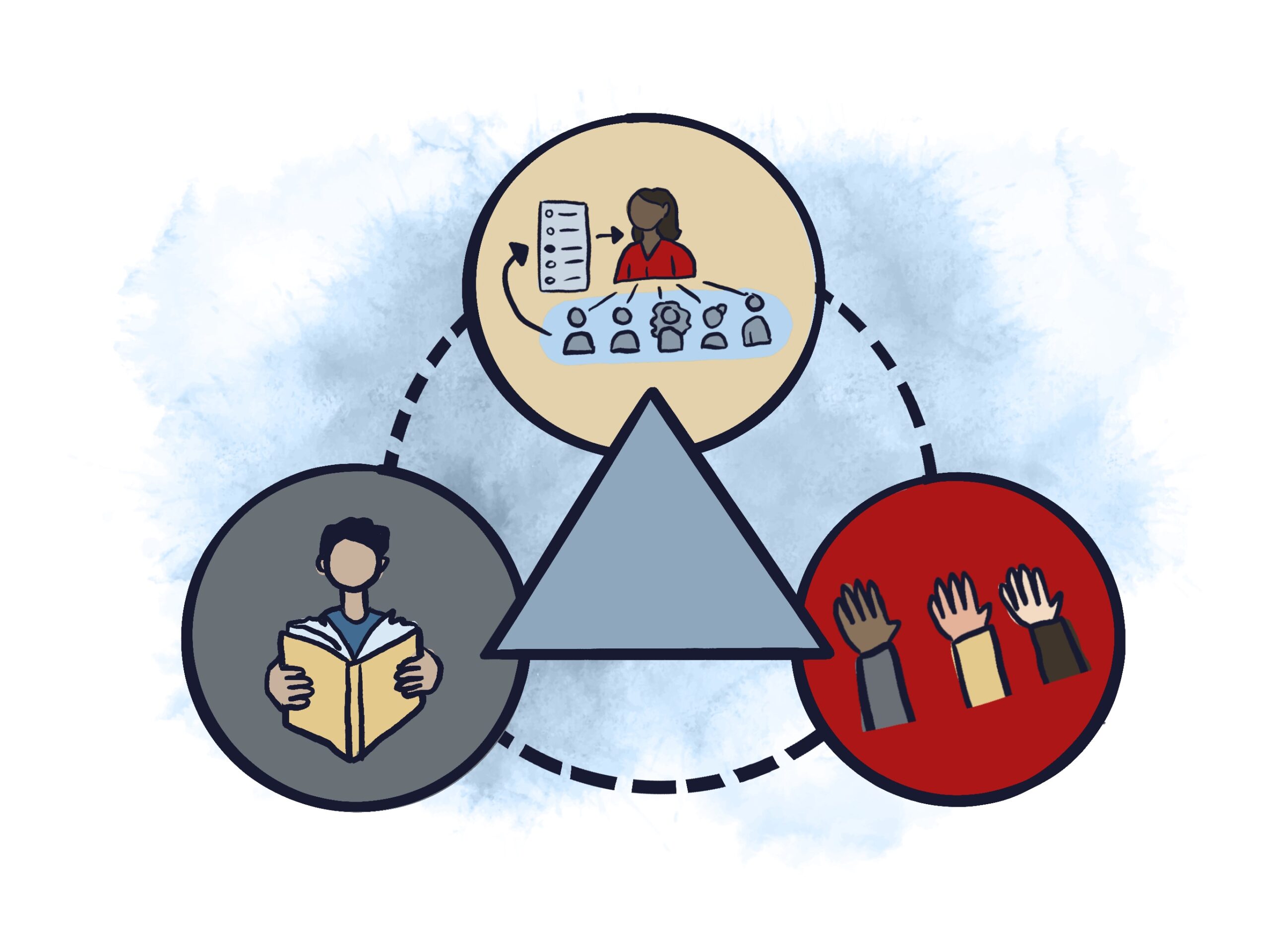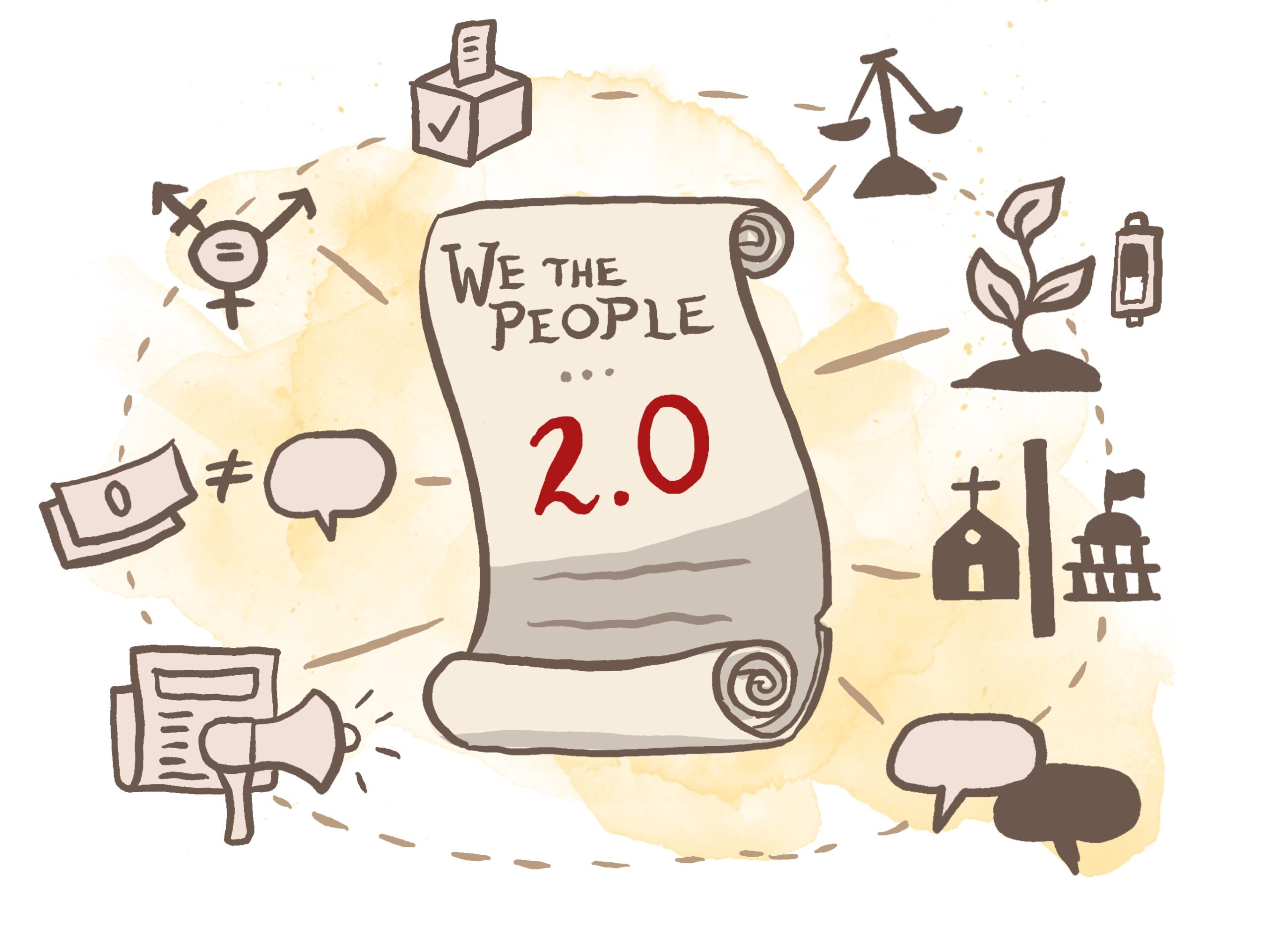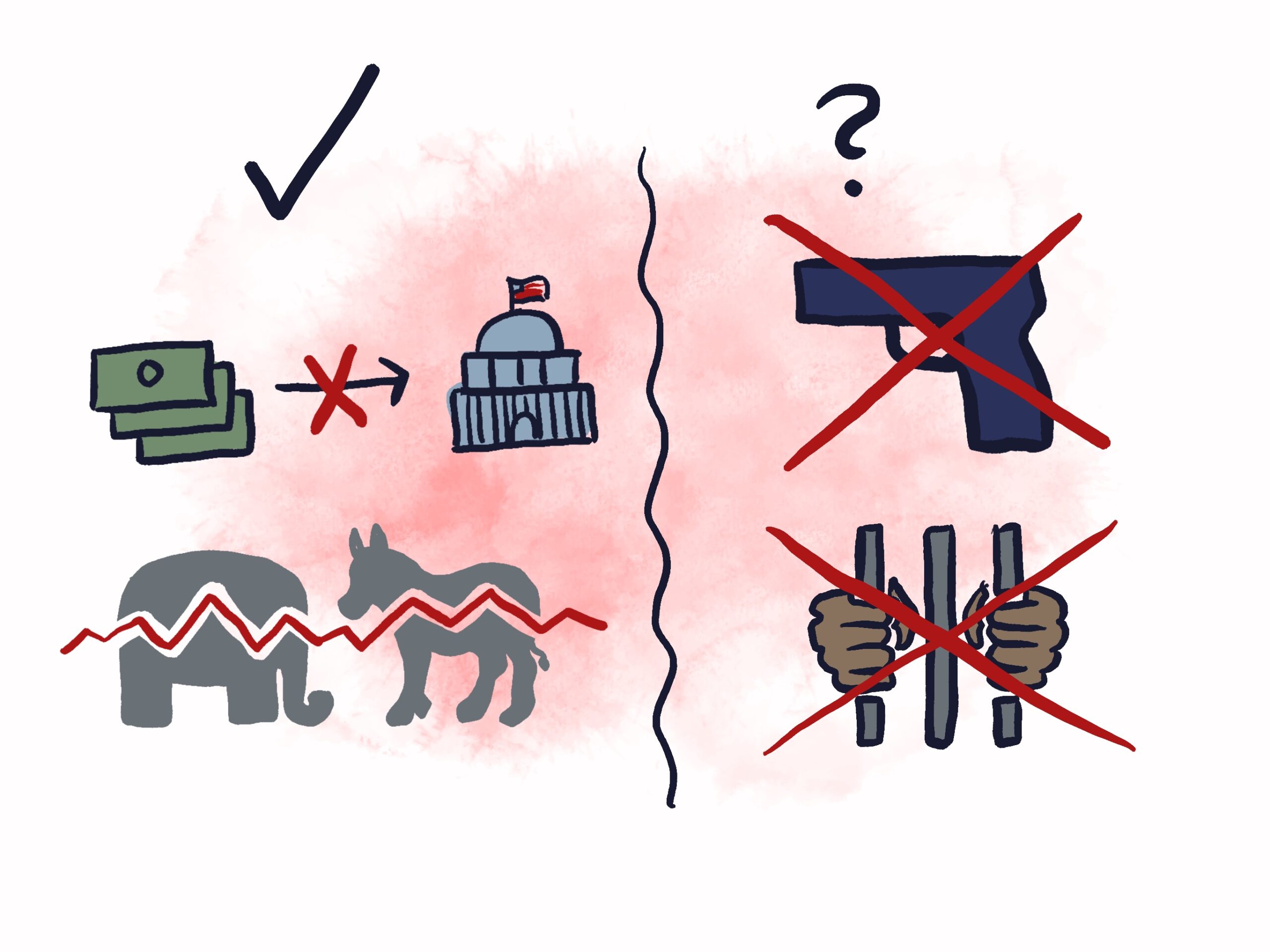You run around the country growing local conventions. A lot of your time is spent traveling and meeting in community centers. You can’t remember the number of times you explain: “There are three legs to democracy: representation, education, and participation. Being represented by officials through a free and fair election is critical — but that’s not all Democracy is — we have to grow the other legs to have a healthy, stable Democracy.” The Constitutional Convention is a rare opportunity for education and participation.


You explain the process, drawn from participatory budgeting and other participatory methodology: three day-long sessions: one day to learn about the Constitution and to analyze its strengths and weaknesses, one day to debate and propose changes or affirmations, and a final day to review the proposals and vote. On that last day, like a science fair, people walk around and hear people arguing for different proposals. On a large electronic board, people can see the results coming in from towns all over. You personally help run 43 sessions.
Most of the results don’t surprise you. Certain measures pass by large margins: eliminating money from politics, limiting terms for judges and senators, ending secret holds and the filibuster, breaking apart the two-party system, and (surprising to some) creating a pathway to citizenship for undocumented immigrants. Other measures remain hotly debated: anything around gun laws, crime reduction strategies, and other aspects of immigration. Those are saved for future conventions to allow this movement to focus on the most widely shared issues. You feel very satisfied — tired, but pleased.

